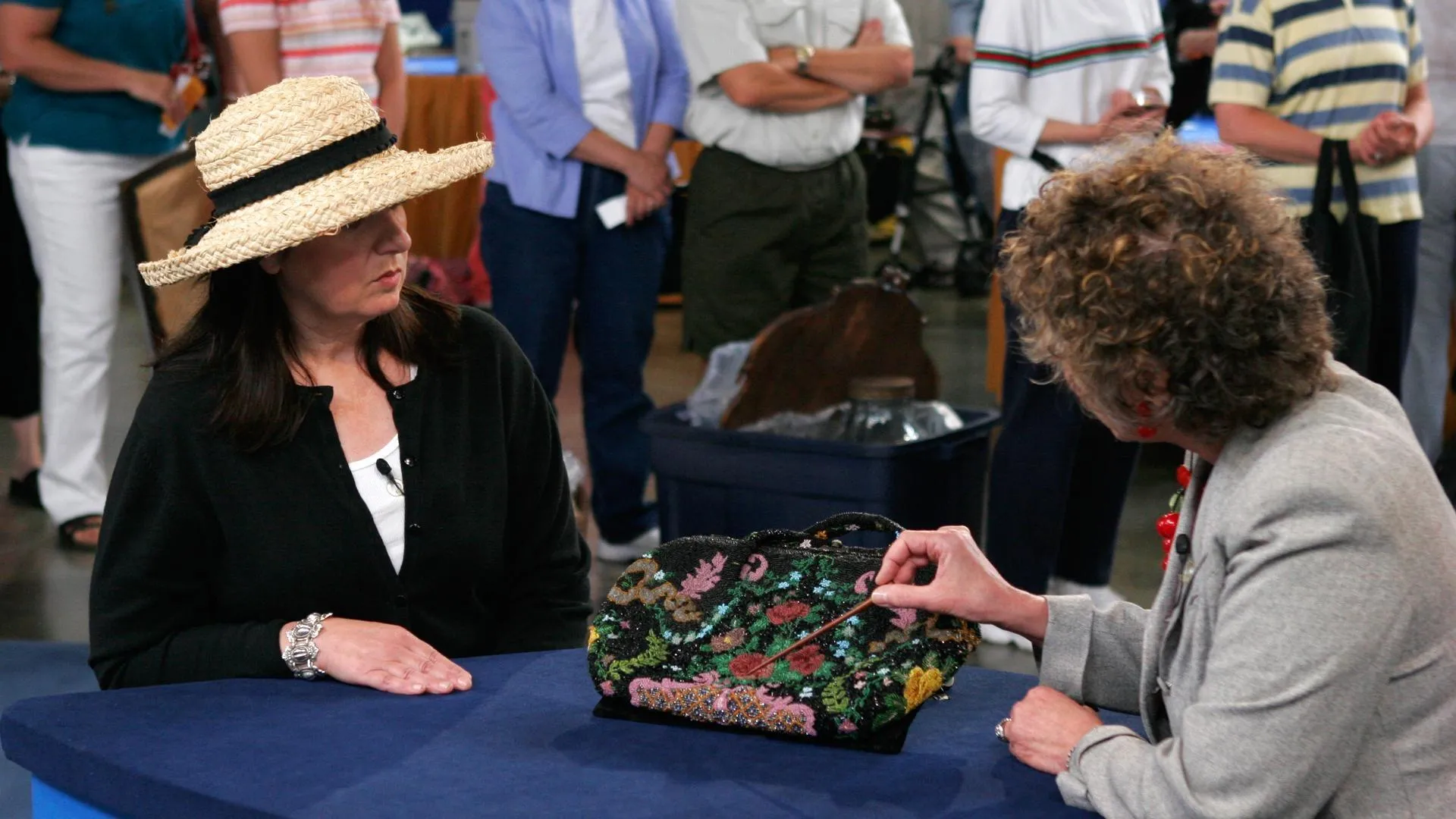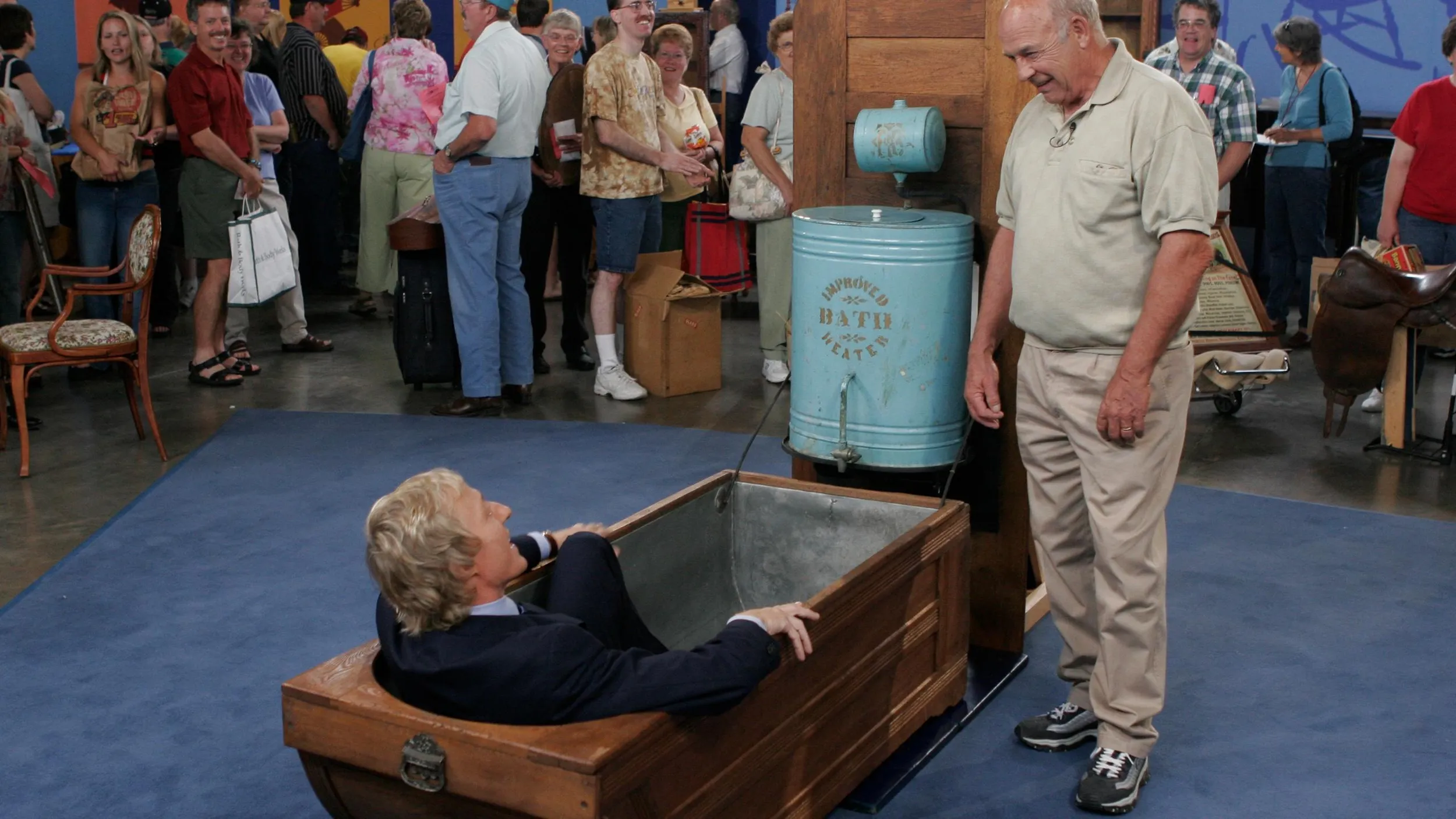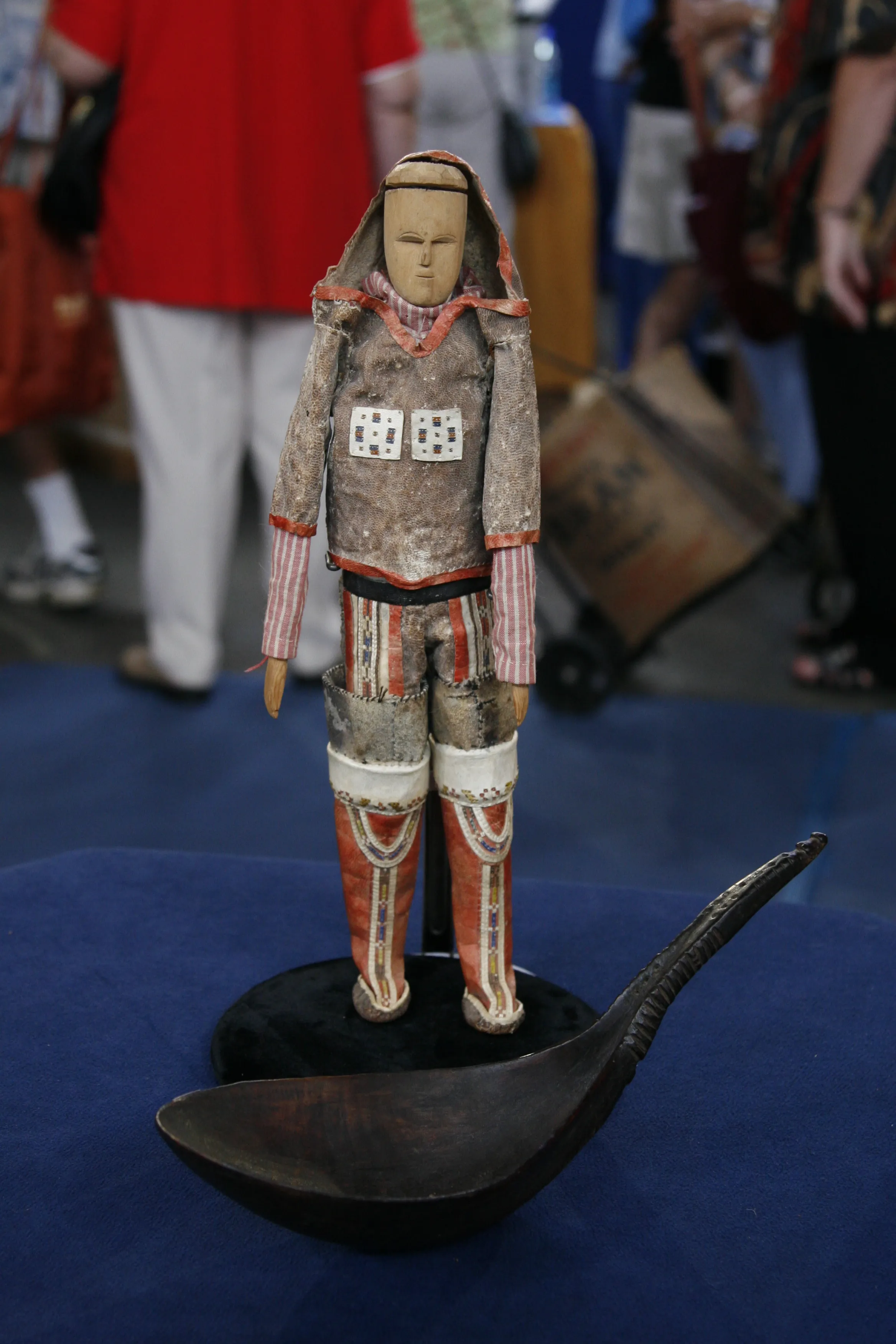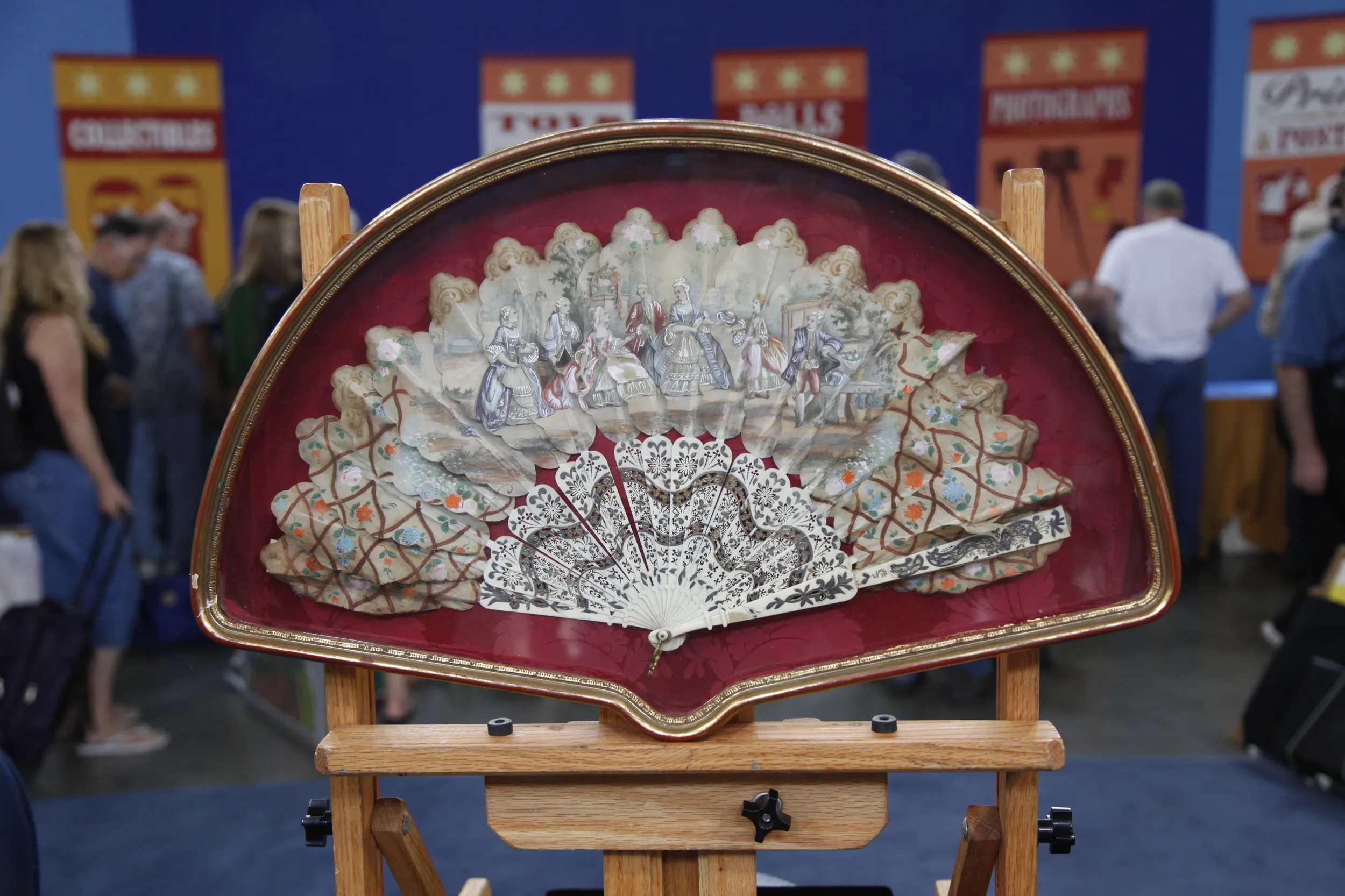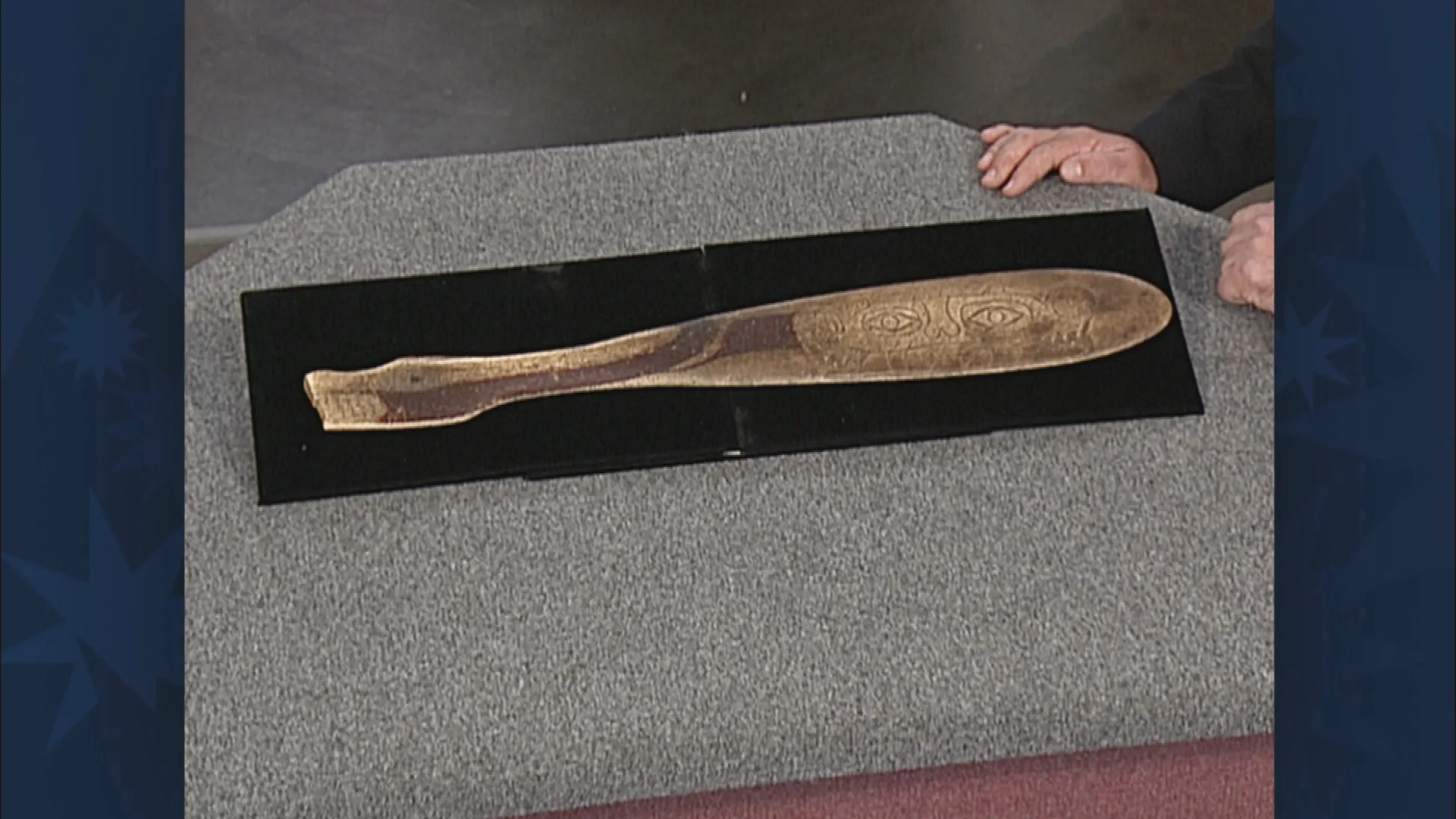GUEST: This was brought back from the Orient by my great-uncle, who was a missionary over there. And he gave it to my father. It's a ceremonial sword. It belonged to a chieftain in, I believe, New Guinea. And I don't really know how Uncle Vernon obtained it, but he got it. When he was in Borneo, they threatened to kill him, and they were going to eat him, but they saw that he had eczema on his legs, and they thought he was unclean.
APPRAISER: (laughs)
GUEST: So he got by that way.
APPRAISER: Well, actually, the story is, that is actually where this came from. It came from Borneo.
GUEST: Oh, from Borneo, hm.
APPRAISER: And it was probably a high-ranking chief's sword, but not necessarily ceremonial. These were actually used.
GUEST: Oh.
APPRAISER: And, in fact, the word for this sword is mandau, and it means "head taker."
GUEST: Oh.
APPRAISER: This custom of head-taking continued right through the 1930s, '40s. This sword also is composed of various beautifully carved pieces of wood and deer antler. I think this one section of wood at the top of the scabbard is actually camphor wood, because it has quite a fragrance to it.
GUEST: Oh.
APPRAISER: This hilt is deer antler here, and it's carved with all sorts of fantastic monsters that are swirling all around it. And then there are these tufts of human hair that have been dyed, and they've been dyed a yellowish-white, black, and red. And the reason why they've been dyed those colors is, they're to resemble hornbill feathers, the hornbill bird.
GUEST: Oh!
APPRAISER: Because a hornbill bird is actually a symbol of war for them.
GUEST: Oh, I see.
APPRAISER: Chiefs actually wear headdresses of hornbill feathers. And then you also wanted to know what was up with this.
GUEST: Well, I was told that the carving was done with that knife.
APPRAISER: It's called a pisau raut, and what it is, it's for cutting bamboo into thin little strings in order to use it for basketry work.
GUEST: Mm-hmm. They used bamboo for a lot of things over there.
APPRAISER: Exactly. When he bought it, it might have been 50 years old at the time. It's probably a late-19th-century one. But it's a finely forged blade, a beautiful thing. The sword and the rattan knife would probably sell at a good day for auction for about $1,500.
GUEST: Mmm.
APPRAISER: And it's actually a substantial amount of money, because a lot of these don't command those kind of prices, but this one is a particularly spectacular example.

